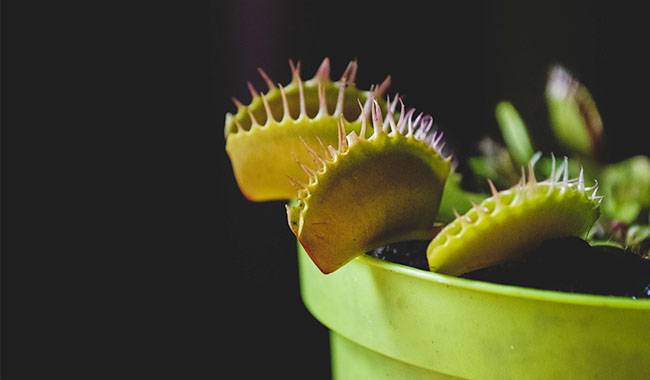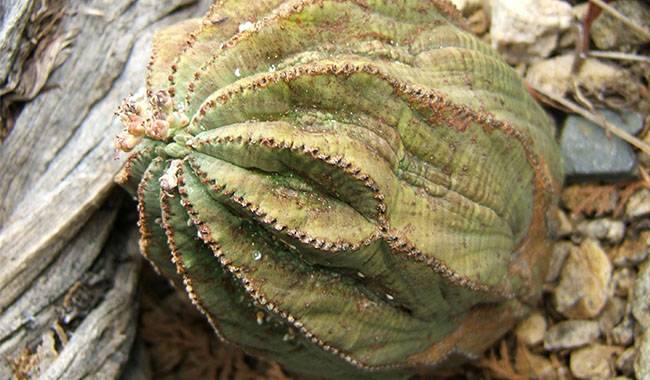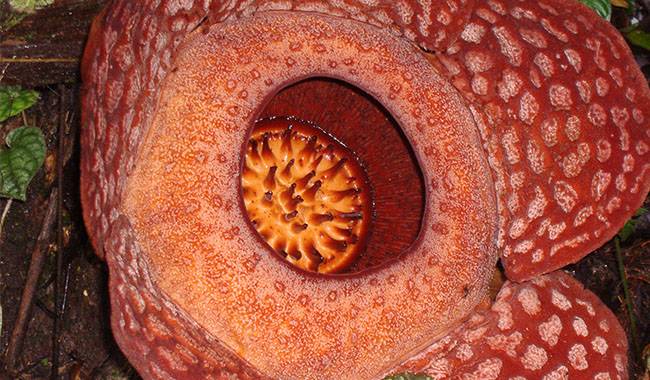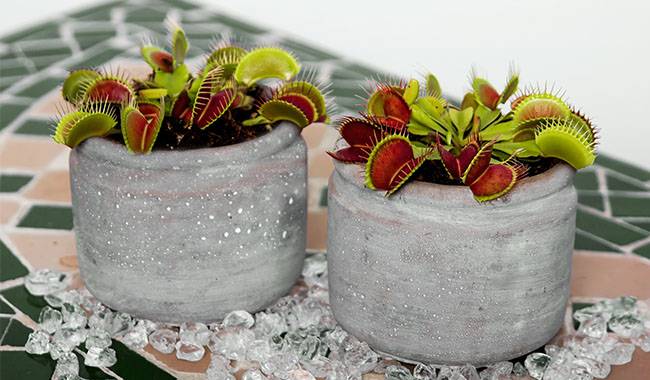
Venus Flytrap, or Dionaea muscipula, is the most popular, brightly colored, and conditioned indoor carnivore, and the most unpretentious. It is not only known for its ability to feed on insects. Its brightly colored traps have unparalleled beauty, making it an extravagant and highly decorative interior decoration. The exotic Venus Flytrap requires special care and is not easy to care for. It loves sun and water and can totally prove to be a plant that is not for everyone. However, Venus Flytrap is the best choice for recommended carnivorous plants. You will learn about Venus Flytrap – A Predatory Plant On The Windowsill in the ThumbGarden article.
What Does The Legendary Venus Flytrap Look Like?
Venus Flytrap (Dionaea muscipula) is a slow-growing plant that can live for decades, reaching a height of 2-4 inches (5-10 cm). dionaea forms a compact rosette of 5-7 leaves that grows from a short underground bulb. As it ages, it forms groups of rosettes with daughter rosettes. The leaves are folded, whimsically lanceolate toothed, often with an asymmetrical serrate margin, up to 3 inches (7.6 cm) long.
Venus Flytrap is a carnivorous plant but does not lose its ability to photosynthesize. After flowering, trap-like valves appear at the top of the leaves. There are some varieties with vertically or horizontally oriented, richly colored purple or green leaves.
Venus Flytrap is very ornamental. The enlarged, modified leaf plates appear to be folded in half – consisting of a pair of petioles that resemble a vegetative version of a mollusk’s shell. When opened, the baffles curve outward. When closed with a bang, they bend outward, creating a cavity inside.
The flaps are edged with dense, sensitive denticles and almost invisible glands that secrete sweet-smelling nectar with a very pleasant scent at the edges that attract insects. The internal “pubescence” consists of trigger hair, which is very sensitive to mechanical stimuli.
Venus Flytrap has a surprisingly beautiful flowering period, but it weakens the plant and is best left unflowered. In spring, at the beginning of growth, the small inflorescences have simple white wavy flowers that rise to a dramatic height of up to 20 inches (50 cm) on slender stems.
Artificial pollination produces seeds. They germinate readily from the buds, lose their germination ability after only 4 months, and can only be stored in cold conditions.
How Do Venus Flytrap Plants Feed On Insects?
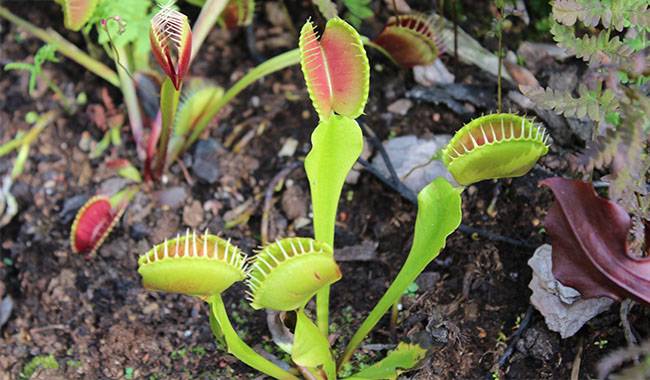
Venus Flytrap feeds on ants, beetles, spiders, grasshoppers, and flying insects and does not respond to micro midges, dirt, dust, litter, or water. Their protection against false alarms is unique. The Venus Flytrap will only shut down with a bang when the mechanical stimulation of the trigger is repeated 5 times, at intervals of up to 20 seconds, and on at least 2 hairs.
The teeth of the Venus Flytrap are initially loosely closed to prevent victims that are too small from being trapped. If there are no insects inside or they escape into the crevices, the trap opens after half a day and the plants are not wasted. But larger prey is not so lucky.
Once the insects have repeatedly come into contact with the bristles inside the leaves, ladled with Venus Flytrap nectar, the trap closes tighter and, if the prey is large enough, the slow process of over-predation on the prey begins.
It is very complex: identifying the prey and changing its enzyme composition according to the type of prey, Venus Flytrap first sinks the insect into its digestive juices, kneads it, and then sucks out the nutrient solution.
The whole process takes 7 to 14 days, after which the trap opens and only the dried chitinous skeleton of the victim remains on the hairs. After 3 to 5 “feedings”, the Venus Flytrap dies. It is this limitation that does not make it worthwhile to introduce a fascinating “burst” just for fun.
Growing Conditions Of Venus Flytrap Plants Indoors
For Venus Flytrap, you need to recreate the natural humidity and light of a bountiful American swamp prairie, which is simply not easy to do in a living room.
A. Lighting and Placement
With the slightest shade or reduction in daylight, rather than large and bright traps, this predator produces miniature, green, reddish trunks and marginal denticles with long clippings that wilt and weaken. Bright sunlight is essential for the proper development of the Venus Flytrap.
Even in winter, Venus Flytrap needs 4-5 hours of sunlight. Artificial supplemental lighting is acceptable and even desirable in inclement weather, with optimal daylight hours of 14 to 16 hours in the summer and 8 to 9 hours in the winter.
Be sure to pay attention to how plants react to direct light: southern and midday sun can cause burns. Plants do not like to turn and move relative to the light source.
B. Temperature control and ventilation
Venus Flytrap prefers steady heat during active growth, with a minimum summer temperature of °F (22°C). They tolerate high temperatures well in air that is not very dry and with adequate watering. For proper development, they need to tolerate a cold dormant period from mid-autumn to March with temperatures between 41-50 °F (5-10 °C). Lighting during the winter period is very important. overheating and overcooling of Venus Flytrap is unacceptable.
Access to fresh air and careful ventilation without airflow (regularly, even in the arboretum and showroom) is essential for the Venus Flytrap. In summer, Venus Flytrap is most often placed outdoors for natural nutrition, choosing a warm and shaded area free from direct sunlight.
More Related: What is the Venus Flytrap
How To Care For Venus Flytrap Plants At Home
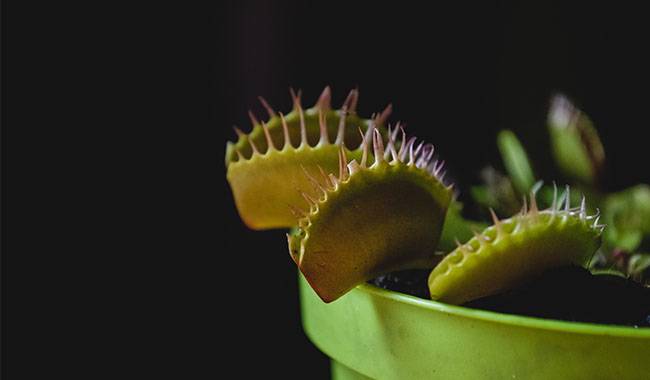
Stable soil moisture and no fertilizer are the keys to the longevity of Venus Flytrap, which does not always live up to its capricious reputation.
A. Watering and air humidity
Venus Flytrap is watered primarily from below, but the classic neat watering method is also acceptable. You can water your plants through trays and water to a level slightly above the bottom of the pot when it is dry. You can use a container with automatic irrigation or submerge the pot periodically to soak the root ball.
Excessive moisture is not allowed, but soil moisture should be steady and moderate rather than light, with the very top of the substrate carefully dried. In winter, watering should be adjusted according to temperature. Venus Flytrap does not like drought and will drop their leaves.
For Venus Flytrap, it should be watered with warm water only. It should be soft, preferably: rain or distilled water, at the same temperature as the air.
Venus Flytrap needs medium to high air humidity with values of at least 40% and an optimum of 70%. Drier air can be tolerated by carefully controlling a stable soil moisture level. Humidifiers, simple sprays, and trays fitted with moist moss or pebbles are also suitable for Venus Flytrap.
B. Fertilization of Venus Flytrap
Without classical nutrition, even as a support measure, it is impossible for Dionysia. Venus Flytrap feeds on insects during the warm season. They eat one insect every 4-6 weeks and in fact, they are satisfied with only 2-3 flies during the whole summer. Venus Flytrap does not feed on flies during the overwintering season.
Feeding insects can be found in aquarium stores, but there is no need to artificially feed plants. It is sufficient to keep shrubs outside in summer or to place Venus Flytrap in a room with no protective netting over the windows.
Feeding worms, slugs, and even more meat and other foods are not allowed.
C. Transplants, containers, and substrates
After the overwintering period, it is best to transplant Venus Flytrap once a year, and at least every two years. Transplant plants carefully into new containers, avoiding contact with foliage and traps.
Venus Flytrap family plants should only be cultivated in soils with a reduced pH of 3.5-4.5, containing peat or inert, coarse, uncompacted, loose soil – special soil for insectivorous plants, perlite, coconut fiber, and peat soil or a mixture of quartz sand and peat. As a last resort, Venus Flytrap can be planted in rhododendron soil containing perlite.
Plants are planted in pots of sufficient depth, equal in width and height. The minimum depth – is about 4 inches (10 cm), the standard for adult Venus Flytraps is 8 inches (20 cm). To accommodate, increase the humidity and shade the plants.
D. Pests and problems in cultivation
Venus Flytrap can be affected by aphids, mosquito larvae, and thrips, which multiply rapidly in the trap. Excessive moisture in the soil can lead to the spread of rot. Venus Flytrap is treated with insecticides or fungicides that have a very narrow range of action.
E. Venus Flytrap in reproduction
Seeds are sown shallowly into a sand culture substrate under glass or aluminum foil and kept in high humidity on a sunny windowsill. It takes about a month for the seeds to germinate.
Mature, large shrubs with several growing points can be branched every 3-4 years. Offspring that develop on either side of the maternal rosette should have several strong root systems. Cut the offspring with a sharp blade and treat the wounds with charcoal. In no case should the trapping mechanism be triggered?




